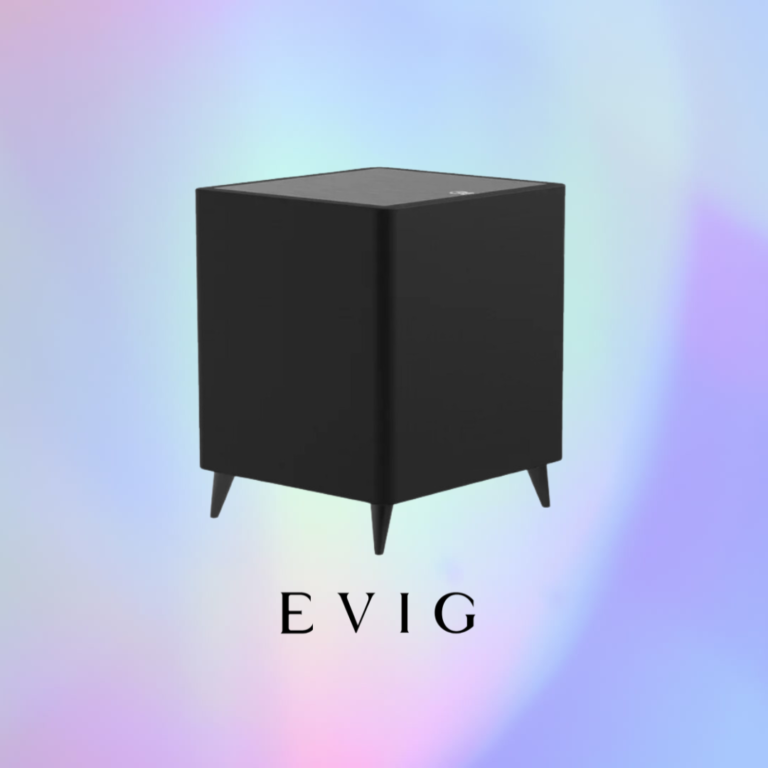Dadiyanki: The Timeless Craft, Cultural Movement, and Modern E-commerce Phenomenon
Introduction
Have you ever seen a work of art that is so fascinating and detailed that it piques your curiosity about its creator?The only place to look is Dadiyanki. This old work of art makes up for a huge shortcoming in the realm of specialties, while not being notable. Be that as it may, what is Dadiyanki precisely, and for what reason is it significant today? How about we investigate its captivating strategy, social importance, and beautiful history that encompass this one of a kind workmanship.
Origins of Dadiyanki
Historical Roots
It is believed that central Asia is where dadiyanki, an ancient practice, originated. Historical accounts suggest that it has been practiced for ages and has been passed down through the generations, despite the fact that the precise origins of it are still largely unknown. From the start, Dadiyanki was something other than workmanship; it was a lifestyle that was profoundly imbued in the social and social texture of the networks in which it was rehearsed. It started as an embroidery of customs, narrating, and bunch exercises with the objectives of regarding the seasons, honoring the predecessors, and apportioning moral examples. These ancient practices, which were intricately connected to the land and natural cycles, reflected the community’s reliance on agriculture and environmental harmony.
Evolution Through the Ages
Over the course of time, Dadiyanki has undergone significant transformations. From their utilitarian starting points, they have formed into endlessly elaborate show-stoppers that mirror changing styles and tastes. The center techniques and careful meticulousness have not changed regardless of these adjustments, safeguarding the substance of dadiyanki. Dadiyanki offered strength and backbone all through violent periods, like conflicts and enormous scope movements, safeguarding social heritage despite outside deterrents.
Role in Various Cultures
Cultural Significance
An unmistakable position is held by dadiyanki in numerous civic establishments, particularly in Asia. It is vital for regular family use, strict rituals, and social festivals. Through its intricate patterns and motifs, it depicts cultural symbols, tells stories, and incorporates spiritual beliefs. Exuberant celebrations and merriments are perhaps of its most outstanding contemporary indication. People from all walks of life come to these colorful events, which include community feasting, dancing, music, and colorful processions. They work as stages for advancing concordance and intercultural trade.
Symbolism and Meaning
Plans in Dadiyanki are not just enlivening; they have profound importance. Flowers and animals are common themes that have spiritual and life-related symbolic connotations. Each Dadiyanki creation has an origin story that gives knowledge into the qualities and culture of the individual who made it. By emphasizing the significance of community and cooperative endeavor, this movement helps its practitioners develop a sense of belonging and cohesiveness.
Traditional Materials and Techniques
Traditional Materials
Dadiyanki is made utilizing regular materials that are accumulated locally in its customary structure. Wood, mud, and regular colors are normal choices among them. These materials were picked for their solidness and representative importance notwithstanding their availability. Dadiyanki experts are progressively utilizing eco-accommodating substitutes including reused wood, normal colors, and biodegradable materials as a feature of a developing development toward maintainability. This change is an impression of a developing familiarity with and devotion to natural consideration.
Traditional Techniques
The cautious craftsmanship expected by the old Dadiyanki processes is high. Molding, painting, and carving are all skills that require a lot of experience and perseverance. No two items are identical because they are handcrafted with great care. The process starts with getting the materials ready, continues through the crafting process, and ends with finishing touches like painting and polishing.
Modern Adaptations
Contemporary Methods
In their works, some contemporary artists incorporate cutting-edge technology and instruments. While keeping up with the soul of Dadiyanki, these strategies give expanded precision and the capacity to make more intricate examples. The workmanship is kept vivacious and imaginative by this mixing of conventional and current parts.
Modern Materials
The materials that go into Dadiyanki have changed however much innovation propels. Nowadays, painters work with a large number of materials, including plastic, metal, and fake tones. By empowering more advancement and availability, these changes ensure that Dadiyanki stays applicable and dynamic in this day and age.
Influential Figures and Iconic Pieces
Influential Figures in Dadiyanki
Over the course of time, numerous artists have made lasting contributions to Dadiyanki. These individuals are lauded for their accomplishments due to their reputation for skillfully mastering their profession and their capacity to marry tradition and innovation. Their works are much of the time involved by youthful painters as models and wellsprings of motivation.
Iconic Pieces
A portion of Dadiyanki’s works have become unbelievable, addressing the zenith of the class. These figures act as diplomats of Dadiyanki’s magnificence and intricacy to a bigger crowd by being much of the time displayed in historical centers and shows.
Integration into Contemporary Art
Contemporary Art and Collaborations
Dadiyanki has established itself in the field of contemporary art thanks to its skilled artists who combine traditional methods with contemporary aesthetics. Modern designers and Dadiyanki artisans have worked together to create one-of-a-kind pieces that combine tradition and innovation. Exhibitions that highlight Dadiyanki’s versatility and timeless appeal frequently result from these collaborations.
Educational and Social Initiatives
Dadiyanki emphatically affects training and society headway notwithstanding its creative importance. Numerous regions give schools, workshops, and preparing programs pointed toward safeguarding customary abilities, specialties, and information. Particularly in underserved areas, these pursuits provide priceless opportunities and skills.
Where to Start
Learning Dadiyanki
Most of the time, people who are interested in learning more about Dadiyanki start by comprehending the fundamentals. This requires familiarizing yourself with the supplies, tools, and fundamental procedures. Dadiyanki courses and illustrations are presented by numerous associations and craftsmen, furnishing members with functional experience and information from experienced teachers.
Incorporating Dadiyanki into Modern Homes
Dadiyanki goods give current home stylistic layout an extraordinary person. Their perplexing examples and social importance make them conversation starters as well as center focuses in any climate. When incorporating Dadiyanki into your living space, keep in mind the overarching concept and color scheme. They give profundity and interest to the environment without overwhelming the space when used as complement things.
Challenges and Future Prospects
Common Obstacles
Dadiyanki’s construction is not without its difficulties. Common difficulties include obtaining premium materials, maintaining conventional procedures, and striking a balance between innovation and tradition. Endeavors are in the works to record and protect customs to guarantee their unwavering giving to people in the future.
Emerging Trends and Predictions
Dadiyanki seems to have a bright future thanks to new trends that place an emphasis on creativity, sustainability, and working with people from different cultures. Experts predict that as people begin to value one-of-a-kind, handcrafted goods, Dadiyanki will regain its popularity. Handicraft will be able to explore new creative avenues as a result of the combination of modern and traditional methods. Dadiyanki: The Online business Industry’s Rising Star.
What is Dadiyanki?
Finding a web based shopping area that satisfies your desires may be all similar to attempting to track down a tough to find little item in the midst of the limitlessness of the web. However, Dadiyanki appears in the midst of this digital jungle—a high-quality, diverse, and convenient haven for e-commerce. Dadiyanki was established fully intent on altering the internet shopping experience, and it has acquired prominence quick for its obligation to brilliant quality and client joy.
Mission and Values
The core values of Dadiyanki are its dedication to client satisfaction, integrity, and expansion. The goal of Dadiyanki is to empower customers all over the world by offering high-quality goods at reasonable prices. They place a high value on honesty, openness, and dependability.
Product Range
Dadiyanki separates itself with an expansive combination of things across numerous classifications. Dadiyanki carefully chooses its stock, which incorporates gadgets, clothing, home things, and that’s just the beginning, to fulfill the advancing requirements and inclinations of its rich customer base.
Why Choose Dadiyanki?
Wide Selection of Products
Dadiyanki is glad for the large number of merchandise it offers, all of which come from dependable makers and providers. Whether you’re looking for cutting-edge technology, fashionable clothing, or everyday necessities, Dadiyanki’s extensive inventory will ensure that you find exactly what you need. When you search, you never know; you might even discover something fascinating and unexpected.
Quality Assurance
Quality is the main goal of Dadiyanki. Each item that is shown on the stage is put through a thorough quality assessment interaction to ensure that it satisfies the most noteworthy guidelines conceivable. Dadiyanki is committed to quality assurance, regardless of the components used, workmanship, performance, or longevity, so that every transaction results in customer satisfaction.
Competitive Pricing
By offering superior products at low prices, Dadiyanki makes luxury accessible to all. Through strategic collaborations and efficient supply chain management, Dadiyanki makes it possible for everyone to experience high-quality goods at an affordable price without sacrificing quality.
Convenience and Accessibility
At Dadiyanki, convenience is guaranteed. The stage ensures a problem free purchasing experience from start to finish with its easy to understand format, basic route, and consistent checkout technique. Dadiyanki makes shopping simple, straightforward, and helpful whether you’re at home or out and about.
Exploring Dadiyanki Features
User-Friendly Interface
Dadiyanki’s versatile application and site have a cutting edge, natural plan that focuses on an incredible client experience. With its user-friendly navigation, effective search and filter tools, and individualized recommendations, Dadiyanki makes all platform interactions simple and enjoyable.
Search and Filter Options
Dadiyanki’s strong pursuit and channel capacities make it simple to track down the best item. Dadiyanki’s refined highlights empower you to limit your inquiry by value, brand, size, and different elements, whether you are searching for a solitary thing or are scrutinizing through a few classifications. This works with tracking down exactly the thing you’re looking for rapidly and without any problem.
Facts:
Origin: Dadiyanki is an ancient craft believed to have originated in Central Asia. Its precise origins remain largely unknown, but historical accounts suggest it has been practiced for ages and passed down through generations.
Cultural Significance: Dadiyanki holds a significant place in various cultures, particularly in Asia, where it is used for everyday household items, religious rituals, and social celebrations.
Symbolism: Designs in Dadiyanki hold deep symbolic meaning, often depicting flowers, animals, and other motifs that carry spiritual and life-related connotations. Each creation tells a story and reflects the culture and values of its maker.
Traditional Materials and Techniques: Dadiyanki is traditionally made using natural materials like wood, mud, and natural dyes, with techniques such as carving, painting, and molding requiring skill and precision.
Modern Adaptations: While traditional techniques are preserved, contemporary artists often incorporate modern tools and materials into their Dadiyanki creations, ensuring its relevance and appeal in today’s world.
Influential Figures and Iconic Pieces: Throughout history, many artists have made significant contributions to Dadiyanki, creating iconic pieces that represent the pinnacle of the craft.
Integration into Contemporary Art: Dadiyanki has found its place in contemporary art through collaborations between traditional artisans and modern designers, resulting in unique pieces that blend tradition with innovation.
Educational and Social Initiatives: Dadiyanki plays a role in education and social development, with workshops and training programs aimed at preserving traditional skills and knowledge, particularly in underserved areas.
Challenges and Future Prospects: Despite its rich history, Dadiyanki faces challenges such as obtaining premium materials and balancing tradition with innovation. However, emerging trends point towards a bright future for the craft, with a renewed focus on creativity, sustainability, and cultural exchange.
Summary:
Dadiyanki is an ancient craft with origins in Central Asia, characterized by intricate designs and deep cultural significance. Over the ages, it has evolved while preserving its traditional techniques and symbolism. Today, Dadiyanki continues to thrive, finding its place in contemporary art and e-commerce. Despite challenges, the future looks promising, with a growing emphasis on creativity, sustainability, and cultural exchange.
FAQs:
What is the origin of Dadiyanki?
Dadiyanki is believed to have originated in Central Asia, although its precise origins are still uncertain.
What is the cultural significance of Dadiyanki?
Dadiyanki holds a significant place in various cultures, particularly in Asia, where it is used for everyday household items, religious rituals, and social celebrations.
What materials and techniques are traditionally used in Dadiyanki?
Traditional Dadiyanki is made using natural materials like wood, mud, and natural dyes, with techniques such as carving, painting, and molding requiring skill and precision.
How has Dadiyanki evolved over time?
While preserving its traditional techniques, Dadiyanki has also adapted to modern times, with contemporary artists incorporating modern tools and materials into their creations.
What is the future outlook for Dadiyanki?
Despite facing challenges, Dadiyanki’s future looks promising, with a growing emphasis on creativity, sustainability, and cultural exchange, ensuring its continued relevance in the modern world.






